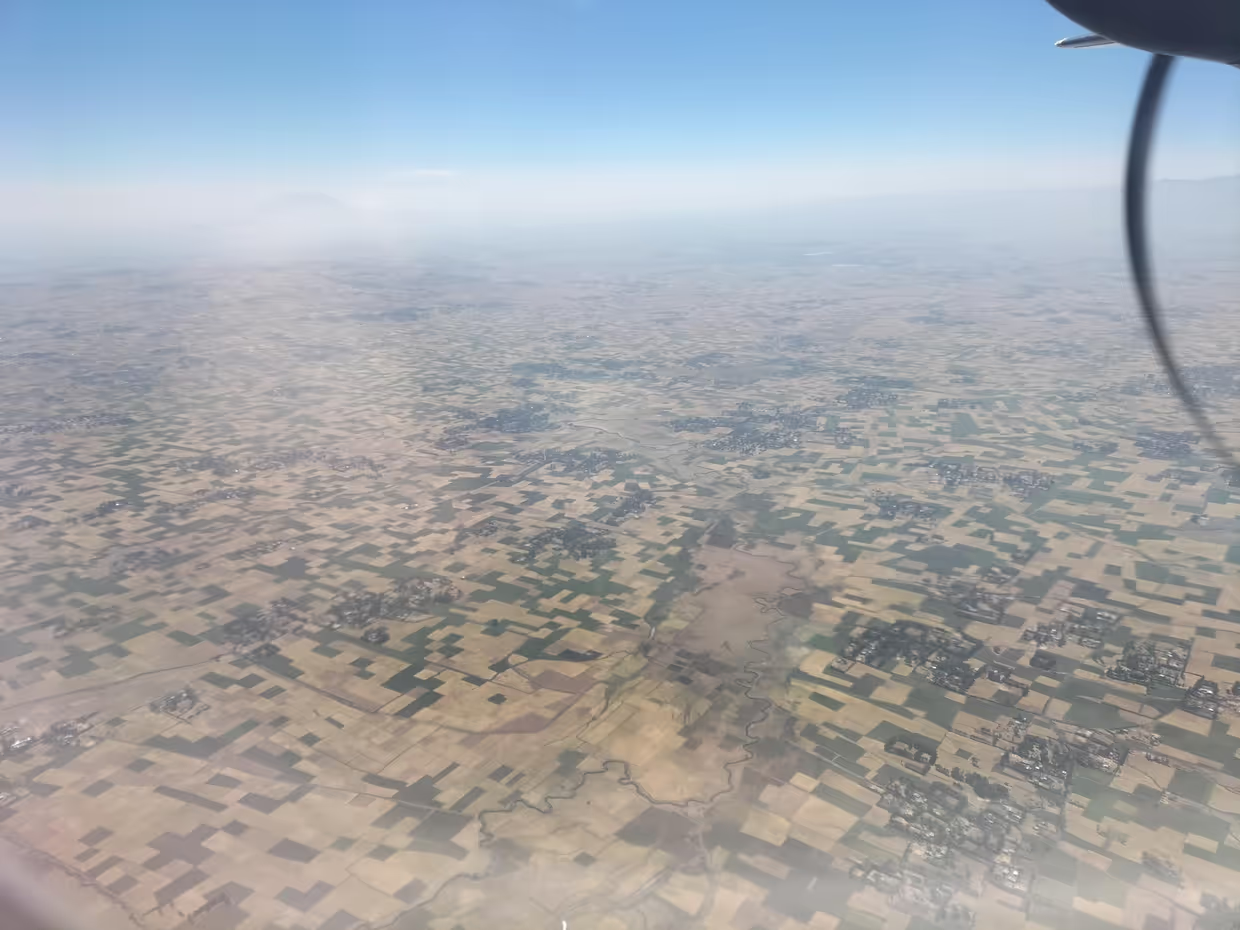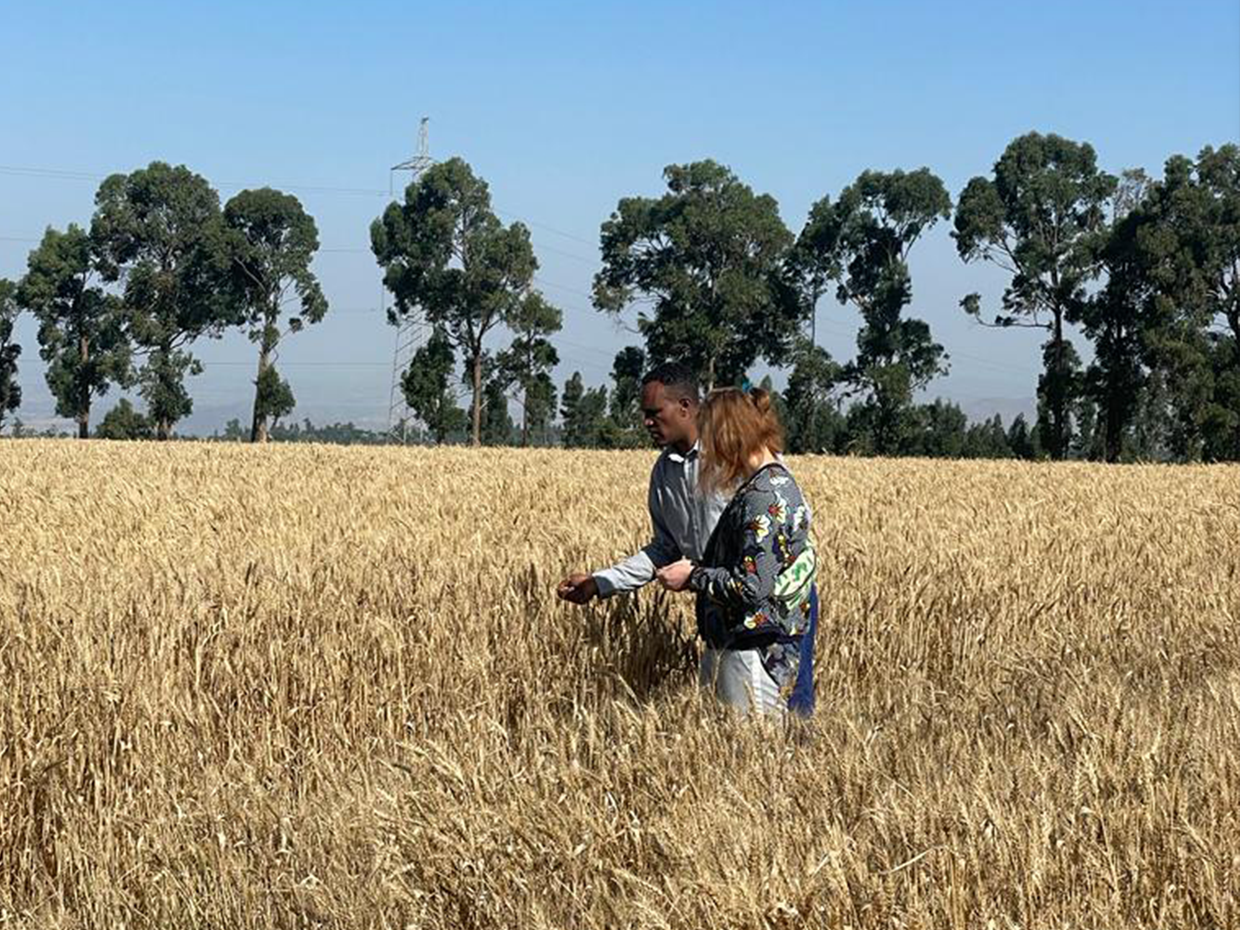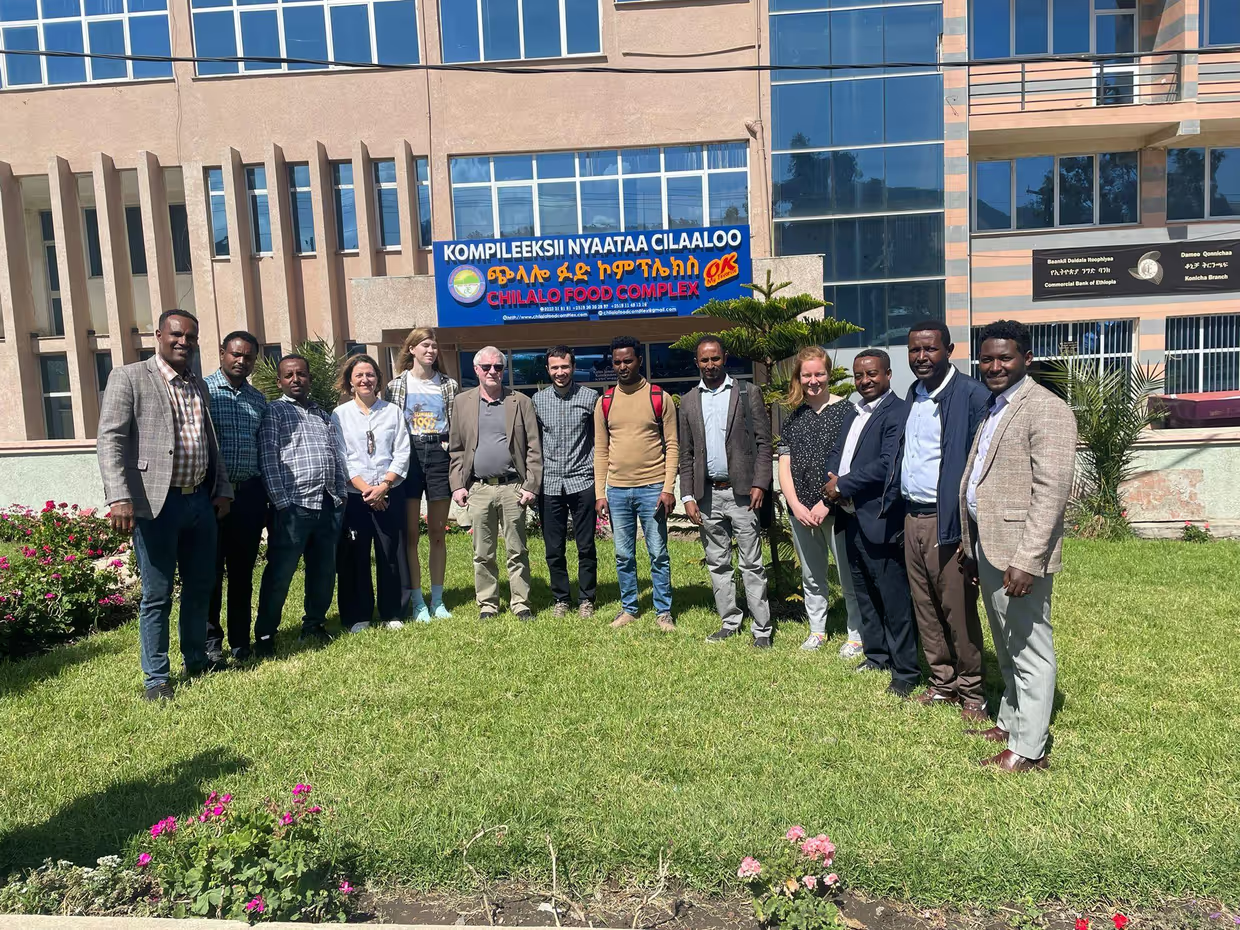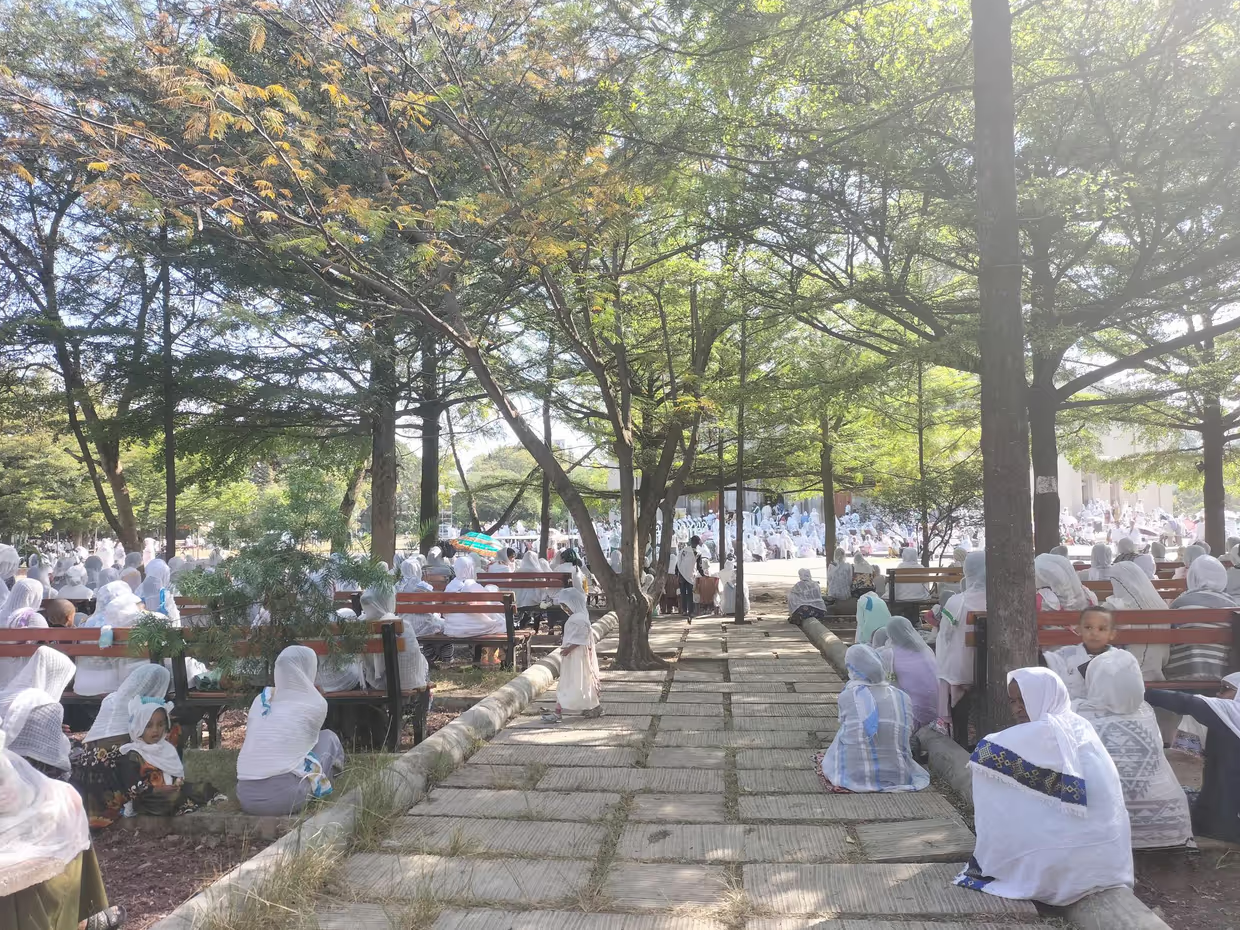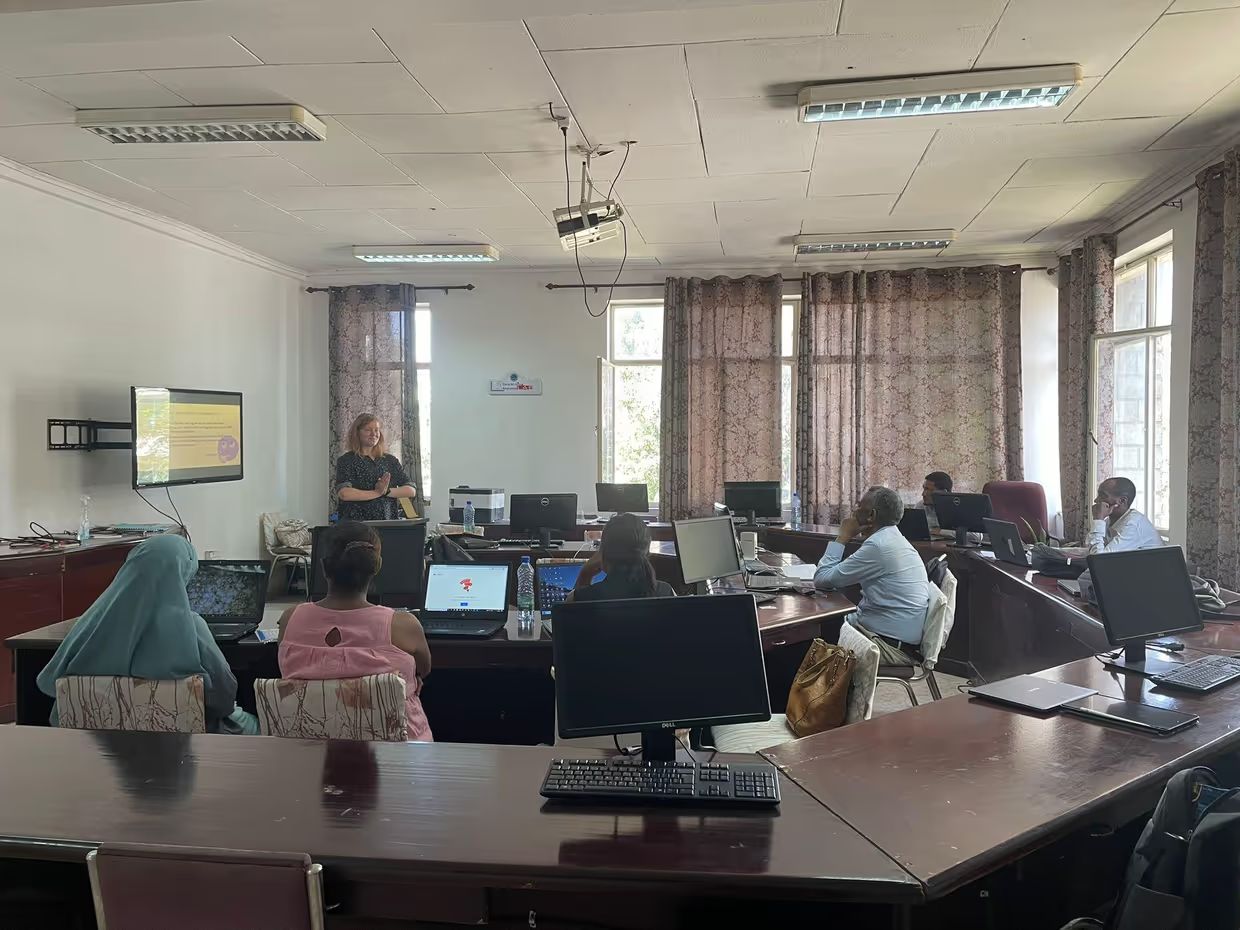Addis Ababa, 06:00 AM
A plane from Frankfurt arrived in Addis Ababa, the capital of Ethiopia, at 6 AM on an autumn morning. Two professors, a research assistant, an MSc student from Weihenstephan-Triesdorf University of Applied Sciences, and ITC’s PhD candidate Aleid Teeuwen had departed from Frankfurt 6 hours before, at midnight. They got off the plane on a comfortable 25 degrees morning and got picked up by a driver that would take them to Adama, a city 2 hours away.
Upon their arrival, the researchers met directly with the project coordinators and the President of Arsi University, Dr Duguma Adugna.
“We were still in our airport clothes” Aleid Teeuwen chuckles. The researchers and the University coordinators hung out in the restaurant eating, talking and drinking, and stayed in Adama for the day. The next day they would have a very extensive tour of the Arsi Universit campus. At the Agricultural Faculty, they saw how the university allowed the students to research and experience a wide range of agricultural management styles and production systems; from giant dairy farms with milking robots to traditional beekeeping, and a sea of experimental wheat fields.
Workshops
Aleid is developing an agent-based model. The model-building process starts out with developing artificial populations of people that resemble real populations and placing them in spatial environments that resemble real environments. The artificial agents interact with each other and with their artificial environments as real people do with other people and with their environment. Agent-based models can get quite complex; Aleid wants her model to capture the dynamics of farms, livestock, crops, and even aspects of farmers’ mental models. In search of ground truth and insight, as well as input for further development, application and use of the model our NRS colleague travelled to Hawassa University and Bahir Dar University. During a series of workshops, she explained how the model worked, and which assumptions she had made, in order to receive critical feedback from a diverse group of experts.
The artificial populations in Aleid’s model resemble rural populations consisting of mostly smallholder farming households. With the model, she wants to explore how to improve food security by means of policies. To simulate policy implementation, elements of the model can be modified in different ways, or new elements can be added. Based on feedback from the experts attending, Aleid realised with an urgency that she had thus far not felt, that she needed to address brokers, both by adding them as model agents and by exploring how policies targeting brokers may improve food security. Currently, the experts said that brokers are the only one’s really profiting and that they will blatantly ignore government regulations, at the expense of both farmers and consumers.
In addition to listening to experts, Aleid gave two one-day trainings for interested staff at Hawassa and Bahir Dar universities. “I really enjoyed introducing people to agent-based modelling. It was the first time that I taught people about agent-based modelling and the research I am doing, and the experience was fun and inspiring. The participants saw a bright future in modelling and programming, so they were very eager to learn and write their own code” Aleid recalls.
Why Ethiopia?
Ethiopia is the country Aleid chose to explore through her model but her initial research question was not focused specifically on Ethiopia. The question that drives her research is: How can we, through more effective policies, solve the problems the world is facing in quicker, more robust, and more just ways? “We can win a lot by choosing smarter policies. And by simulating policy implementation with models, we can assess and compare policies prior to their implementation. I chose to focus on Ethiopia because it is one of the most food insecure countries in the world, and also because it is rich in agricultural and household data, and I have previous research experience from Ethiopia” states Aleid.
As she explained, this is not her first trip to Ethiopia. For her MSc thesis, she collaborated with a PhD student who developed farming practices to boost maize yields, and Aleid interviewed farmers to explore whether they were interested in adopting these practices. “Due to my previous experience in Ethiopia, I thought I had a good idea of what agriculture in Ethiopia looked like, but Ethiopia is a big country, and now I was in different areas and they looked completely different." According to Aleid, "This confirms that visiting the system you are trying to model is of great importance, and I am grateful I got the opportunity to observe and talk to so many knowledgeable people".
A look into the future
Though the field of agent-based modelling for policy assessment is very promising, there are limitations to what you can achieve in a PhD project. Modelling research projects generally need to be larger to have an impact, so Aleid hopes that her modelling project will not end when her PhD ends. She hopes that a larger team of researchers will hop aboard and that the model and model findings will be used in practice, also outside of academia. In hope of making an impact, she tries to spread her work to a larger audience. “The trainings I gave are also part of that work. Listening to the experts at the two Ethiopian universities also helps increase the likelihood of real impact, because I believe that research that is grounded in local realities, and that addresses local problems with locally sourced solutions are much likelier to ultimately contribute to positive change. I also work with open-access software, and publish my data, code and models in open repositories such as GitHub and CoMSES to make my work more accessible”
Aleid is already thinking of jumping again on a plane to Ethiopia. She explains “When you are modelling from afar it is important to always come back to make the model stronger. It is an iterative process. I want to make it as strong as possible to help speed up the alleviation of food insecurity through means of policy”.
Want to learn more about modelling?
Our course for the Master in Geo-Information Science and Earth Observation called “Environmental modelling: causes and impacts of changing resources” teaches students the right techniques to apply and evaluate environmental models. These models aim to estimate the change in natural resources in response to environmental changes. Click here to learn more about our courses.
More information
This NRStory covers a PhD project developed by Aleid Teeuwen in collaboration with Arso University, Hawassa University, Bahir Dar University and Weihenstephan-Triesdorf University of Applied Sciences. Click here to read more about Aleid’s work.


